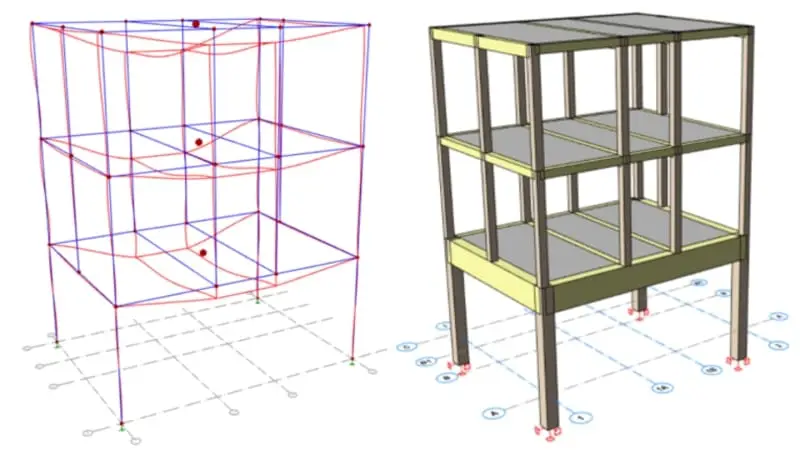
3D Effects in a Building with Transfer Beam
Summary
Understanding Transfer Beam Analysis in ProtaStructure
This document explains how ProtaStructure transfer beam analysis enables engineers to model and analyze transfer beams using advanced 3D analysis tools. Transfer beams play a crucial role in redistributing loads within a structure, especially in cases where columns or walls above do not align with those below. By using ProtaStructure, engineers can simulate and evaluate transfer beam behavior in a 3D model, ensuring more accurate and detailed results compared to traditional methods.
Key Features of Transfer Beam Analysis in ProtaStructure
ProtaStructure allows engineers to analyze transfer beams within the context of the entire building model. Therefore, the structural system behaves as intended under various load conditions. The following aspects of transfer beam analysis are highlighted:
3D Model Simulation
Transfer beams are incorporated into a fully modeled structure. Consequently, this approach allows for precise load distribution analysis, including interactions with adjacent structural elements such as columns, slabs, and walls.
Analysis of Front and Rear Transfer Beam Frames
Results from ProtaStructure provide detailed insights into the performance of both front and rear transfer beam frames. For instance, engineers can analyze stresses, deflections, and load-bearing capacities under varying scenarios.
Comparison with Traditional Methods
ProtaStructure’s results are also compared with those obtained using the traditional tributary area method. In most cases, the software’s 3D analysis reveals more realistic load transfer patterns, leading to safer and more efficient designs.
Code Compliance
Furthermore, the analysis ensures compliance with international building codes, making ProtaStructure suitable for projects worldwide.
Advantages of Using ProtaStructure for Transfer Beam Analysis
- Precision: Advanced 3D modeling captures complex load paths and interactions that traditional methods may oversimplify.
- Efficiency: Automates calculations, saving time while improving accuracy.
- Integration: Seamlessly integrates transfer beam analysis with other structural elements in the design process.
- Customization: Engineers can adjust parameters to suit specific project needs, ensuring flexibility.
Real-World Applications
Discover how ProtaStructure has been used to model and analyze transfer beams in real-world projects by exploring our Projects Gallery. From high-rise buildings to complex architectural designs, ProtaStructure has proven its value in delivering reliable results.
For more inspiration, read our Customer Success Stories. Learn how ProtaStructure has helped engineers overcome challenges and achieve success with innovative structural analysis tools.







